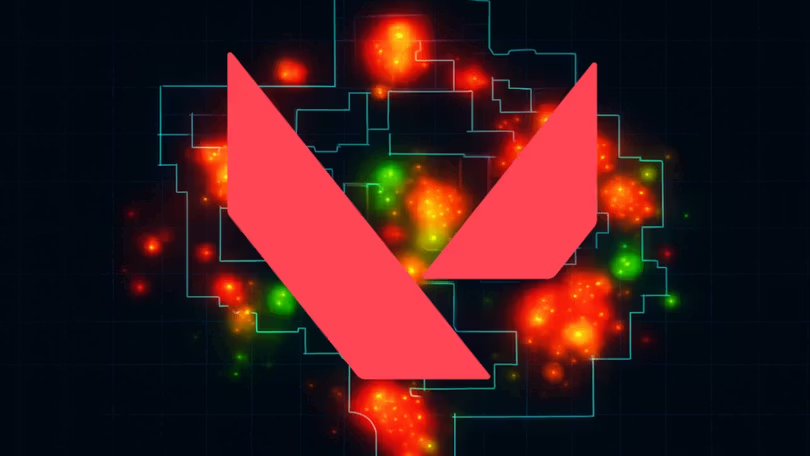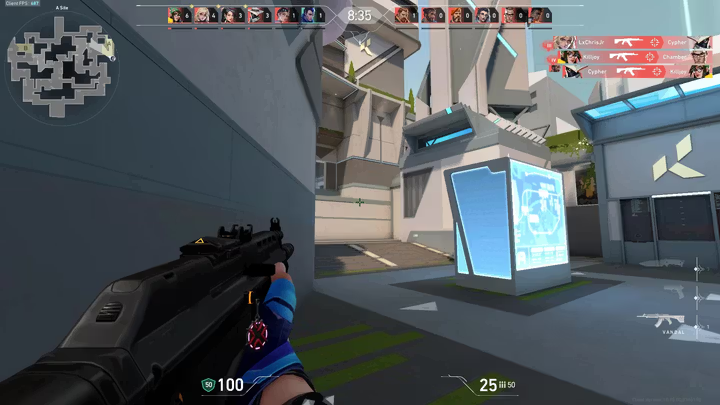
Every tactical shooter game has its heartbeat, the first few seconds when your attackers burst through a choke, your defenders then either collapse or hold your ground firm. It's a live or die situation. OK, I'm (over)dramatizing a bit and building up to it, but you get the point.
I always come back to watch those moments frame by frame, because the red and green swirls on a kill-location heatmap explain far more than any of my after-action guesswork.
On Valorant’s Bind, for example, public match data shows me that defenders are farming eliminations from the narrow garden outside B Site, while attackers thrive in the tighter angles at B Short and B Lobby. You take a look at that, just one glance, and it will tell you whether a certain push lives or dies, what was wrong and was good in the decision-making process.
Turning Those Colored Dots into Actionable Insight
Before, old-school analysts could spent hours tagging kills "by hand," then they would argue about sample size. Today, modern tools do the grunt work in real time, we have data as it happens, and your next match could already receive improvements suggestions, an ad-hoc coaching session.
Overwolf’s Guardian watches each live round, logging every kill and trade that was made, then just casually pops up mid-match with simple advice like “Skip Mid next round, 70 % death rate.”
The same live parsing powers Spike Stats, which stitches an entire match into one dashboard and flags patterns like, say, losing every 3-v-3 that starts with a Mid entry.

Those pop-ups sometimes feel like magic, you feel like you should not be doing it, you're being OP. The math behind it is as straightforward as it can be. Track X and Y coordinates for every player death, aggregate them by map zone and compare success rates. Voila, job done. When the system notices you're dying in the same corner five rounds running, over and over again, it tells you, politely, but firmly, to stop. Can you, please?
Red Zones, Green Zones, and Practice Plans
Here's another really good example - Scope.gg. This platform let's you color your personal kill map with bright red where you lose and green where you win. Coaches, players, I, love the immediate visual.
A blood-red elbow on Mirage? Time for a dry-run with flash drills until that spot cools down, or better to say greens down. Community analysts do the same for pro plays. During VCT Stage 2, some of the fans highlighted that attackers kept bleeding lives at A Bath and B Window on Bind, warning the teams to adjust their utility timings. If you get the help based on data, just use it, don't resist it.
From Static Maps to Live Coaching
The latest step is marrying those heatmaps to AI suggestion engines, we can't just leave those large models idling there doing nothing, right? Enter SenpAI.gg, which was built on Riot’s public API. It compares your match history to thousands of pro rounds and recommends an agent or load-out that fits your tendencies. Sounds good, and it is, now I can pick a duelist who clears tight angles fast, or swap to an info-gathering initiator if I keep losing to those blind entries.
In the future, I see a chat window popping out, or a voice conversation like with ChatGPT, where I can just tell it to do the swaps for the next round. There's already plenty of such tech that use AI chatboting functions, how hard it can be to implement it within such tools, we could have an extended hand that cuts down the trial and error even further.
On the pro side, Evil Geniuses lean on an HP analytics stack that crunches terabytes of match data in minutes, surfacing patterns even veteran analysts miss. Consumer hardware is also catching up, where Razer’s Project AVA which was unveiled at CES 2025, uses the same principles to "whisper" positioning tips in League of Legends based on live minimap reads. Count me in for one of those as well.
Gear Tweaks: Agents, Operators, and Utility
Of course, numbers alone do not fix our bad habits, because load-outs matter too. If your kill map shows endless deaths at a long sightline on Dust 2, an AI coach could tell you to invest in an AWP, not yet another, cool-skinned rifle (but it's really cool, c'mon). Noesis on the other hand (used by several tier-one CS teams), overlays entry-frag data onto round timelines so you can decide whether to swap an entry fragger to lurk duty, or buy extra flashbangs for a stubborn corner.
The same logic pushes attackers toward operators in Rainbow Six with breaching shotguns when close-quarter kills keep spiking at a window rappel. It sounds mundane until your win rate climbs three points overnight. In my case it took a bit longer, because I'm just not that good, hence this article, duh.
Data-Backed Precision Wins
I would say that the payoff is definitely speed. Tasks that once took an analyst half an hour, now finish in a few seconds.
A post-match report would read right then and there: “All five rounds without smokes at Mid ended in losses” or “Uncleared Site C anchor survived 70 % of the time”
Those numbers shape your next scrim plan, and not another of coach’s hunch.
Add that feedback loop to every practice you do, and your red zones will most likely start turning green.
My Snipped Takeaway
Kill-location heatmaps give tactical shooters a GPS for improvement, and AI coaches translate those pixels into clear marching orders, so pick the right lane, pack the right gear, and stop donating lives where the data says you will lose them. I know I will. Eventually.